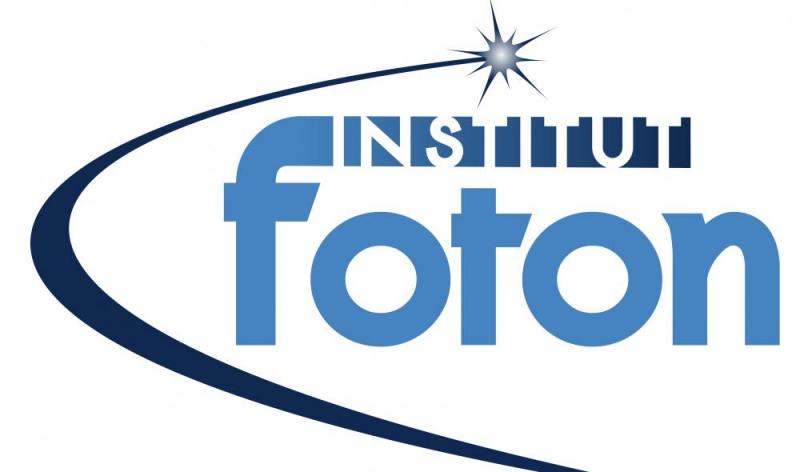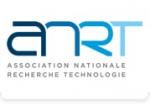Master 2 - Micro-fabrication and optical characterizations of photonic integrated circuits for the near-UV/visible ranges
| ABG-134067 | Master internship | 5 months | ~650€ |
| 2025-10-28 |

- Physics
Employer organisation
Website :
The Institut FOTON (https://www.institut-foton.eu/) is a research unit of the French National Centre for Scientific Research (CNRS) associated to University of Rennes and the National Institute for Applied Sciences (INSA) of Rennes. Foton Institute is composed of three research departments: two are located in Rennes and the third (“Photonic Systems”) is located in Lannion. The two cities are located approximatively 170 km apart, in the province of Brittany, Western France. Photonic Systems team (~55 people) is involved in research on laser physics, telecommunications systems and integrated photonics in particular towards the experimental demonstration of new functionalities that could potentially contribute to overcoming the challenges related to sensors sensitivity and telecom capacity. The group has an established reputation in the area of integrated photonics. All the simulation and experimental (processing and optical characterizations) tools required for the project completion are available within the Photonic Systems Department in Lannion. The successful candidate will carry out research in Lannion (France).
Learn more about the location here: https://www.technopole-anticipa.com/workinlannion/
Description
Context
Visible and near-ultraviolet (UV) photonic devices enable a broad range of applications, including sensing, quantum technologies or medicine. Systems have been developed for biomedical diagnostics, optogenetics or underwater pollutant detection. This spectral range is also relevant for optical frequency metrology, optical functions, and sensing. With the drive for more compact systems, many research groups have turned their attention to the search for transparent integrated platforms in the visible and near-UV range. The widely used silicon-on-insulator (SOI) platform cannot be used, as the low band gap energy of silicon inhibits efficient transmission for wavelengths shorter than 1.1µm. Silicon nitride (Si3N4), aluminum nitride or tantalum pentoxide (Ta2O5) have also been identified as good candidates to operate at short wavelengths.
Aluminum oxide (Al2O3) and heavy metal oxides are particularly attractive alternative platforms for visible and ultraviolet integrated photonics, as they combine favorable optical and structural properties. Their wide transparency window, extending from the UV to the mid-infrared (MIR), together with their high index contrast with silica, enable a broad range of applications. Furthermore, strong compatibility with rare-earth dopants make them excellent candidates for gain-enabled devices. Compared with aluminum nitride or tantalum pentoxide, Al2O3 has emerged as a commercial solution for photonic integrated circuits (Kervazo et al., Opt. Express 33, 44157 (2025) doi, Kervazo et al., IEEE Photonics Technol. Lett. 37, 753 (2025) doi). offering lower propagation losses than silicon nitride in the ultraviolet range.
Objectives and research program
The objective of this internship is thus to investigate the potentialities of such material platforms in the near-UV/visible ranges. This internship will be primarily focused on the development of micro/nano-processing technologies but will also cover multi-disciplinary research areas ranging from materials science to optical characterizations of advanced device functionalities through photonic devices design. To achieve these ambitious objectives, this internship will be organized in several tasks:
- Technological processing: waveguide patterning through photo (i-line) and/or electron-beam lithography, followed by reactive ion etching (RIE) and/or inductively coupled plasma (ICP) etching. Etching parameters (gas mixture, gas flow, reactor pressure, and power) will be investigated to identify the optimal conditions for minimizing sidewall roughness.
- Optical design/simulation: measurement of the refractive index of thin films in the visible range depending on deposition conditions and subsequent simulation of integrated waveguides to define the waveguides geometrical dimensions enabling single mode propagation.
- Optical characterizations: investigation of passive and active properties of (rare earth-doped) thin films and waveguides. Evolution of these properties with materials (composition and doping) and processing parameters (etching, annealing) will be investigated.
Profile
The candidates should have an excellent knowledge of physics and photonics and been inclined to both simulation and experimental work ranging from optical design to microfabrication through optical characterizations. Preliminary experience with cleanroom activities, integrated devices characterizations and/or simulation of photonic devices would be a desired asset. The ideal profile would combine interest for simulation/experimental work and good interpersonal skills. Candidates with strong ability to work in autonomy will be favoured. Good communication skills in English or French are required.
Starting date
Vous avez déjà un compte ?
Nouvel utilisateur ?
Get ABG’s monthly newsletters including news, job offers, grants & fellowships and a selection of relevant events…
Discover our members
 MabDesign
MabDesign  CESI
CESI  Groupe AFNOR - Association française de normalisation
Groupe AFNOR - Association française de normalisation  ADEME
ADEME  ANRT
ANRT  Tecknowmetrix
Tecknowmetrix  CASDEN
CASDEN  TotalEnergies
TotalEnergies  ONERA - The French Aerospace Lab
ONERA - The French Aerospace Lab  MabDesign
MabDesign  Laboratoire National de Métrologie et d'Essais - LNE
Laboratoire National de Métrologie et d'Essais - LNE  Aérocentre, Pôle d'excellence régional
Aérocentre, Pôle d'excellence régional  Ifremer
Ifremer  Nokia Bell Labs France
Nokia Bell Labs France  PhDOOC
PhDOOC  ASNR - Autorité de sûreté nucléaire et de radioprotection - Siège
ASNR - Autorité de sûreté nucléaire et de radioprotection - Siège  SUEZ
SUEZ  Généthon
Généthon  Institut Sup'biotech de Paris
Institut Sup'biotech de Paris



